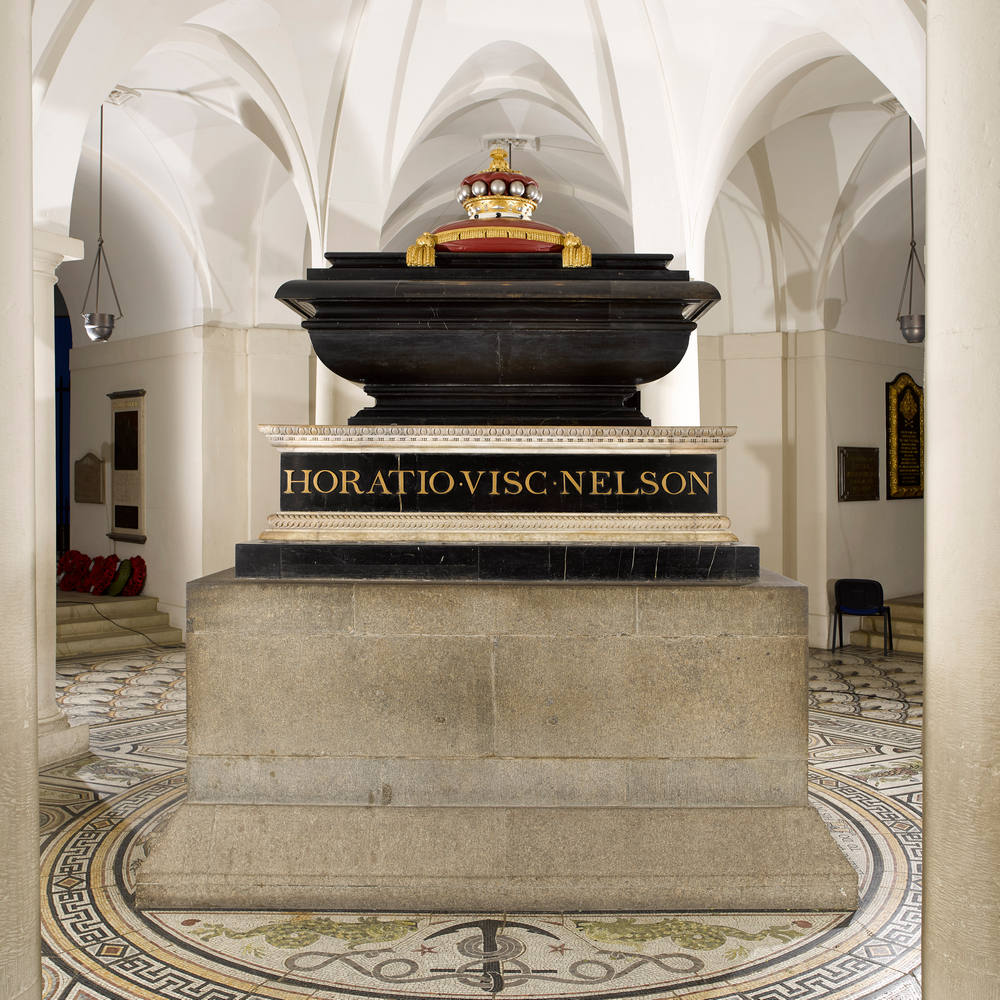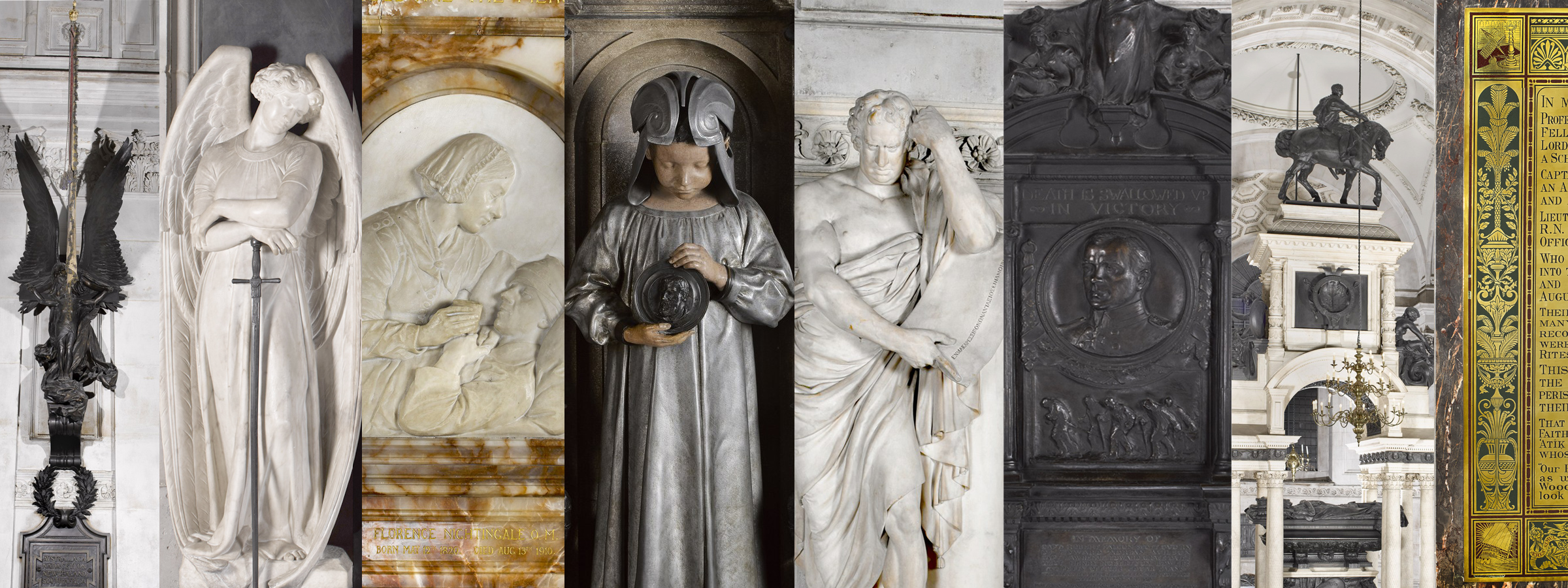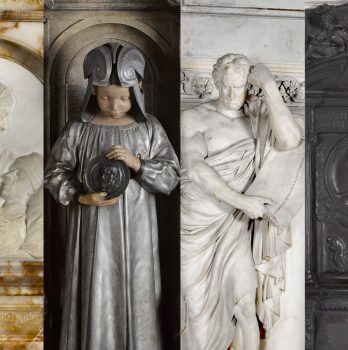‘I Survived the Walrus’: Historian and Broadcaster Sam Willis’ Response to the Sarcophagus of Vice-Admiral Horatio Nelson, 1st Viscount Nelson (1758–1805) by Benedetto da Rovezzano (1524–1529), Read by Elliot Cowan


‘I Survived the Walrus’
A monologue in the voice of Admiral Nelson, written by Sam Willis, read by the renowned Elliot Cowen, an actor who trained at RADA and works across all media. He most recently appeared in 2:22 A Ghost Story in London’s West End.
Transcript
Ah! A visitor. I love a visitor. People who know me would say that I like the attention. They are right.
But this visit is unbalanced. You see – you’re not sure that I’m actually inside this tomb are you? That I’m lying here like a walnut in a shell?
But I am.
And I know for certain that you are there because I can hear you, even if you are silent: You see, I can hear your heart beating, as regularly and as powerfully as cannon fire from one of my ships. I can hear it through the marble.
You probably know a little about me; but that doesn’t mean you actually know me does it?; it doesn’t help you know what you feel about me.
Let’s put that right. Now what is it that makes us so different?
Were you such a frail baby that non-one expected you to live?
Did your mother die when you were nine?
Have you ever fought for your life against a wild animal – a WALRUS?
Did the Spanish take your arm?
Did they give you a hernia the size of a fist?
Did the French take the sight of one of your eyes?
Did they take the skin off your forehead?
Do you have malaria that will never leave you be?
Has a sniper ever shot you in the back, breaking your spine?
It’s true, all true. Even the walrus. The smell of that oily beast stayed with me in my dreams for the rest of my life.
Too much for one life perhaps.
But do not weep for me.
Because we are similar after all. Because none of this physical pain matters.
What is your most powerful muscle? Aha, now we are there – mine was my heart.
My body was literally taken from me piece by piece by my enemies. A walrus here, a mosquito there; a limb here, an organ there.
Each year there was simply less of me than before, and there was never much to begin with.
I can hear your heart beating in the silence. I can hear you through this stone and this wood, and through these years. Your heart is strong. It is the strongest part of you.
Do not weep for me. Do not weep for yourself or for any of us.
Be stronger than your body allows. USE your heart.
How many brothers or sisters do you have? I had… TEN. And I was in the very heart of them all: five older and five younger.
Too many to love? No – and that is the point; you have no choice but to love them all. Do not pick, no not choose. Love everyone with equal measure, and never forget to love and value yourself.
Remember; I can hear your heart through this stone and this wood, and I can hear your heart through these years. Your heart is strong.
I am the frailest man you have ever met; and yet I survived the Walrus.
You can too.
You can’t deny my story, far-fetched as it seems. You don’t need a historian to tell you what happened – here I am! Here is proof! I am literally right in front of you. And I can hear your heart.
I am the frailest man you have ever met; and yet I survived the Walrus.
You can too.
About Sam Willis
Dr Sam Willis is one of the UK’s leading historians. He has made more than ten TV series for the BBC and National Geographic, ranging from The Silk Road to Shipwrecks: Britain’s Sunken History; and his many publications, which focus mainly on maritime history, include The Fighting Temeraire: Legend of Trafalgar (Hearts of Oak Trilogy) and In The Hour of Victory: The Royal Navy at War in the Age of Nelson. He co-hosts the Histories of the Unexpected podcast with Professor James Daybell and presents the Society for Nautical Research’s Mariner’s Mirror podcast, the ‘world’s No.1 podcast dedicated to all of maritime and naval history’.
Visit Sam’s website and find him on Twitter, Facebook, Instagram and Vimeo.
About Nelson’s Tomb
Nelson’s tomb, in the crypt of St Paul’s Cathedral, lies immediately under the cathedral dome. The black marble sarcophagus, made by Benedetto da Rovezzano (1474-1552), was originally commissioned by Cardinal Wolsey. Following Wolsey’s fall from grace, Henry VIII claimed it for himself, though it was not used as his tomb. Following the death of Vice-Admiral Horatio Nelson (1758–1805) at the Battle of Trafalgar, George III offered the sarcophagus as the final resting place of the national hero.
Nelson’s body was preserved in a barrel of spirits for the journey back to England. It was placed in a lead coffin before being transferred to a wooden coffin made form the mainmast of L’Orient, the French flagship captured at the Battle of the Nile. This coffin was placed in another lead coffin and then another wooden coffin, and Nelson then lay in state in Greenwich Hospital’s Painted Hall for three days before his funeral at St Paul’s. Some 100,000 people filed past his catafalque; and thousands lined the streets for his funeral procession, which included royalty and other dignitaries and more than 10,000 soldiers. Seven thousand people attended the funeral itself, at the end of which, Nelson’s coffin was lowered through the cathedral’s floor to its final resting place in the massive sarcophagus.


